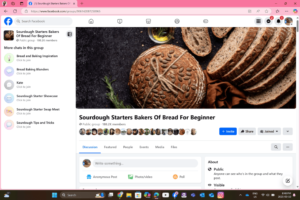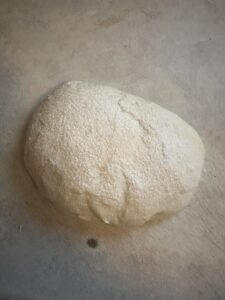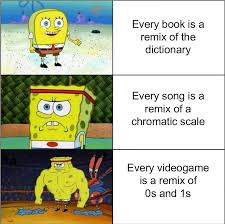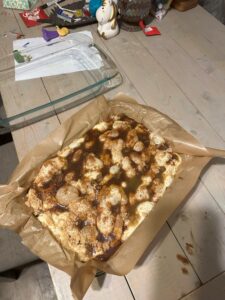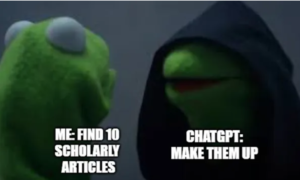Exploring Open Education Global: A Valuable Resource for Educators
In the evolving field of open education, finding reliable and high-quality resources is essential for educators. One platform that stood out to me in the open education movement is Open Education Global (OEGlobal). But how effective is this platform, really? Is it user-friendly, well-organized, and valuable for educators? Let’s explore OEGlobal and evaluate its overall impact on the education community.
User-Friendliness and Organization
The OEGlobal website is thoughtfully structured, featuring clear navigation menus that allow users to access information about the organization’s activities, events, resources, and news. The main sections—such as “About OE Global,” “OE Global Activities,” “Latest,” and “Join”—are prominently displayed, making it easy for visitors to explore the site’s offerings.
Quality of Resources
While OEGlobal provides access to well-curated educational materials, the variety and scope of resources available could be expanded. Some educators may find the selection limited compared to other repositories that offer a broader range of subject areas and educational levels. Additionally, ensuring regular updates and maintaining high-quality content standards would enhance the platform’s credibility and usefulness.
Educators looking for a broader collection of peer-reviewed open textbooks may also explore the Open Textbook Library, which offers a wide range of materials across disciplines. Similarly, MERLOT provides access to multimedia educational resources that have been peer-reviewed, making it a great supplement to OEGlobal’s offerings.
While OEGlobal it’self does not operate as a traditional OER repository, it provides access to a well-curated collection of open educational resources through its Open Education Resources section. This part of the site includes links to featured OER collections, introductions to open education, and resources from past events and award winners. The quality of these resources seems to be generally high, as they come from reputable sources within the open education community.
Navigation and Searchability
While the website is structured fairly logically, there are areas that could be improved in terms of discoverability. The lack of a dedicated OER repository with built-in search functionalities can make it challenging for educators to find specific materials efficiently. Educators who require more precise search capabilities may find platforms like OER Commons more useful for their direct needs. A more robust search feature within OEGlobal could enhance the user experience and streamline access to its curated content.
For those looking to explore the global impact of OER, the OER Impact Map offers valuable insights into how open education resources are being adopted worldwide. Additionally, the BC campus Open Education initiative showcases success stories and case studies that highlight the benefits of OER adoption in higher education.
The website’s intuitive layout ensures users can navigate through different sections with ease. However, since OEGlobal does not host a dedicated OER repository with advanced search functionalities, it directs users to external repositories and resources instead. Educators who require specific OER materials with thorough search capabilities may find platforms like OER Commons more useful for their direct needs.
Ease of Use

OEGlobal is designed to be user-friendly, with straightforward menus and accessible content. However, some users may find the navigation slightly overwhelming due to the number of external links leading away from the site. A more centralized approach to presenting resources—such as categorized lists or an improved filtering system—could improve accessibility and ease of use for educators looking for specific content.
OEGlobal is designed to be user-friendly, with straightforward menus and accessible content. Users can effortlessly find information about upcoming events, news updates, and links to external resources. Since it does not have a complex repository system, it remains approachable for educators seeking information about open education initiatives without feeling overwhelmed.
Visual Appeal
The website boasts a clean and professional design, utilizing a consistent colour scheme and layout that aligns with its branding. The use of images and icons enhances the visual experience without detracting from the site’s functionality.
Value to Educators
For educators, OEGlobal serves as a valuable hub for engaging with the broader open education community. It offers insights into global initiatives, access to specially curated resources, and opportunities to connect with professionals through events and discussions. While it may not replace specialized OER repositories for direct resource searches, it provides context, support, and connections that are invaluable for educators invested in open education.
Educators new to OER may find the OER Starter Kit Workbook especially useful, as it provides step-by-step guidance on how to integrate open resources into their teaching. Additionally, understanding licensing is crucial for using and modifying OER correctly, and Creative Commons Licensing Guide is a great tool to help educators navigate the complexities of open licensing.
Additional Considerations
OEGlobal’s commitment to fostering a global community is evident through its diverse activities and collaborations. Educators can benefit from the organization’s events, such as conferences and webinars, which address current trends and challenges in open education. Additionally, the site provides links to various projects and special initiatives, giving educators numerous opportunities to engage and contribute.
Final Thoughts
While OEGlobal may not function as a traditional OER repository with extensive search functionalities, it excels as a well-organized, user-friendly platform that connects educators to high-quality resources, events, and a global community dedicated to open education. Whether you’re looking for curated OER collections, professional development opportunities, or a network of like-minded educators, OEGlobal is a valuable platform worth exploring.
How do you currently integrate Open Educational Resources (OER) into your teaching, and what challenges or successes have you encountered along the way?

